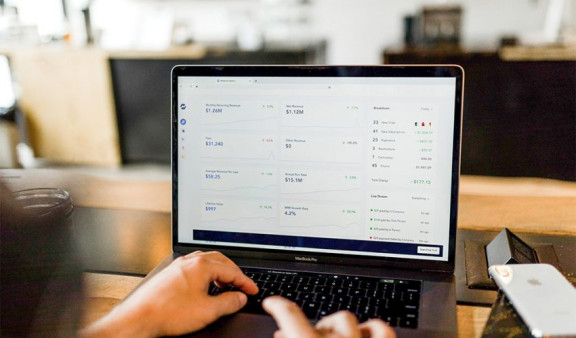
Expect the unexpected and prepare your B2B operations for the future
Offices forced to shut; supply chains disrupted; orders turned upside down. The COVID-19 pandemic has caused havoc to businesses around the world.
The latest survey from the Office for National Statistics shows nearly half (48 per cent) of UK businesses have experienced a drop in turnover compared to expectations for this time of year, with 17 per cent of companies in the accommodation and food services industries at a severe risk of insolvency.
The B2B industry has been hit particularly hard, but it’s not all doom and gloom. Many companies have been quick to diversify, open up different sales streams, or invest wisely in their digital operations, with ‘resilience’ ‘agility’ and ‘flexibility’ key.
What makes a business agile? What should retailers in the B2B sphere be doing now to be more flexible in case of any major disruptions in the future? What lessons can be learned from the brands that have come out of the pandemic best?
Redbox takes a look at some of the key takeaways.
Be prepared for all eventualities.
The B2B brands that coped best in the early months of the pandemic had robust processes in place to deal with major disruption to their business and could think and act quickly.
While few contingency plans or risk management systems are likely to have had a virus in their Top 5 most likely disruptions to operations, most businesses would have considered and planned for issues with supply chains.
In a podcast discussing a recent McKinsey Global Institute study on the risks and reliance in the global supply chain, McKinsey Global Institute partner Susan Lund said businesses must look at supply chains as a whole when planning for all eventualities.
She said: “We were thinking about things like trade tensions and trade disputes, or hurricanes or cyber-attacks. And then COVID came out of nowhere. But even before COVID, we were able to talk to experts across industries and find out that, on average, companies will now expect to see a disruption to their production lines of one to two months, which is a very long time, every three-and-a-half to four years.
“So even though each time there is a disaster, it seems like it’s coming out of the blue, the fact is that the world has more shocks. This reflects the fact that we live in a multipolar economic system. It also just reflects the fact that we’ve spent 25 years creating these incredibly complicated, complex global supply chains. And they were designed for cost and efficiency, but without really a thought to what could go wrong along the way.”
Businesses should ensure they have considered as many major events as possible that could disrupt their ecommerce operations. What would happen if there was cyber-attack? Is your supplier based in a country or region at risk from political unrest?
But while it’s important to look at these major disruptors, it’s also key to focus on vulnerabilities further down the supply chain. Are there areas in your supply chain you don’t have visibility of? What can you do to limit problems with these? Many companies are now even closely tracking the supply all the way back to the raw material to limit future issues.
For digital B2B brands with bricks and mortar stores, what processes do you have in place if physical stores are forced to close again due to a ‘Second Wave’ of Covid-19, or other issues in the future? Are you able to re-route stock easily and quickly to your ecommerce warehouses or centres to have surplus stock for your online operations? How quickly can you refocus your marketing strategy to help online take the brunt of this shortfall? Is your digital operation ready to allow for quick changes in business direction?
This is real agility. Agility in all areas of the business is vital to ensure you can quickly adjust and adapt to all situations.
Look at the processes you have in place to ensure there would be minimal impact on your customers’ needs and on your own teams’ ability to service these needs. What can you do differently or better to help customers self-service, track their deliveries and return goods, for instance? It’s crucial to display real-time stock levels and pricing on your website - the more real-time information that is available at the touch of a button, the quicker and easier the transactions will be and better the customer satisfaction at the end of it.
Time to invest in your digital platform
There’s simply no longer any argument to be had in not properly investing in your digital platform and operations.
While the pandemic has pushed more consumers online to buy everything from their groceries to their electric bikes, B2B is no different. The way companies buy and sell already looks different and realistically, unlikely to change.
In McKinsey and Company’s B2B Decision Maker Plus, a survey of 3,600 B2B decision makers in 11 countries, 12 sectors, and 14 spend categories found 96 per cent of B2B sales teams have fully or partially shifted to remote selling, with 65 per cent saying the remote model is as effective or more effective than what they were doing before the pandemic hit.
Speed and convenience are high up the list of reasons for this, with three quarters of buyers and sellers saying they prefer this digital self-serve and remote human engagement way.
Before the pandemic, Redbox partnered with Builder Depot to help create a new digital ecommerce experience that would accelerate their digital journey.
Built on Magento Commerce, it has provided the company with a scalable, secure and flexible commerce foundation with increased performance and improved robustness.
The Magento store was built with four separate storefronts, each corresponding to a user’s defined delivery address, due to variations in product selection and logistics solutions offered in different parts of the country. This functionality, which is automatically geo-located to a post-code, allowed Builder Depot to improve the user-experience and relevancy of each session - with zone specific product availability, stock, delivery options, banners, recommendations, etc.
A bespoke quotation module was also designed and implemented in the backend of Magento. Now an agent is able to create a quote for a customer including margin restrictions that are set by the agent’s access levels. This allows large orders to be quoted and paid for much more efficiently and with no loss in analytics.
The integration of Nosto and Dotmailer gives the company the option of a more-tailored mail-marketing experience to engage with customers. Shipper HQ will help streamline and customise shipping rates and delivery options, while Klevu brings AI powered search results, helping to improve customer experience, conversion rates and overall performance.
While Builder Depot wasn’t aiming for an immediate boost in sales after launch, conversion rates rose by as much as 86 percent.
Your digital store should provide real-time information of everything, from products to delivery tracking, to help customers adjust to the new way of doing things and enable a seamless experience.
Your online store must be able to process complex orders and allow customers to effortlessly pay, manage returns and pay invoices online, with access to order history and account data for merchants and customers easily available.

Further considerations
Investment in your business shouldn’t just be confined to your online platform. Many B2B brands are accelerating their plans in other areas too. In the same way that customers of B2C businesses are using many different digital channels to engage with brands, B2B is seeing similar trends.
Customers can no longer meet face-to-face with the merchants, so want and expect a range of digital options open to them.
B2B sellers reacted quickly to the pandemic, with 90 per cent now working via video conferencing according to the same McKinsey report.
Mobile apps have also doubled in importance from before the pandemic – and have become almost three times as important for B2B brands in Spain and the UK.
Invest in your video conferencing abilities and apps now, to ensure you keep up with your competitors.
While some businesses are bunkering down and holding investment back to see what 2021 brings, many are accelerating their growth strategies.
Could you launch online stores in other markets or regions? Timing is everything and with the future of bricks and mortar so uncertain, now could be the time to make your move -find new customers and growth streams.
Could a Headless approach be the way to go providing you with the flexibility you now need? A Headless architecture separates the back-end structure from the CMS front-end display of your platform, allowing both to operate independently of one another. It can enable B2B retailers to be more reactive and experimental and allow for quick and easy customisation, fast scale-up or the flexibility to try new approaches to content, selling and marketing – without the fuss of a major overhaul – as well as enable commerce on any device or application as your business evolves.
In summary
While this has been a year like no other in terms of uncertainty, many B2B brands are busy re-evaluating strategies, putting more robust plans in place to ready for future disruptions and investing in their digital operations.
To prepare your business better for ‘Second Waves’ or other eventualities in the future, think:
- Agility: Is your business agile enough to adapt quickly? Is your digital operation set-up for any major disruptions?
- Supply chain: Do you have visibility in all areas of the supply chain? What can you do to limit any future problems?
- Invest in digital: Are you ready if your physical stores are closed? Is your online platform suitable to take on surges in demand quickly? Do you provide real-time information to help new or old customers? Is it time to look to launch online in new markets?
- Remote working: Can you invest in extra training for staff to ensure your video conferencing and calling operation is slick? Take a look at the Adobe Help Centre to learn more about Creative Cloud apps and how Adobe Connect can help you stay in touch with your workforce.
- Don’t forget your app: If B2B is following the lead of B2C, your apps and omni-channel options shouldn’t be ignored.
While the COVID-19 pandemic is by no means over, many B2B businesses acted quickly with more than 88 per cent of the participants of a McKinsey study expecting the digital way to stick around in the long term.
Ensuring your digital store and digital operations are right for you now – and for the future – is more vital than ever before. Talk to Redbox to see how they can help.